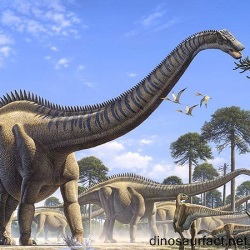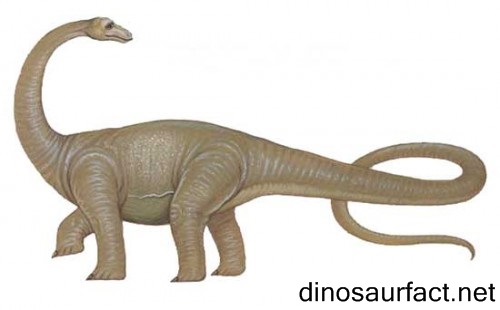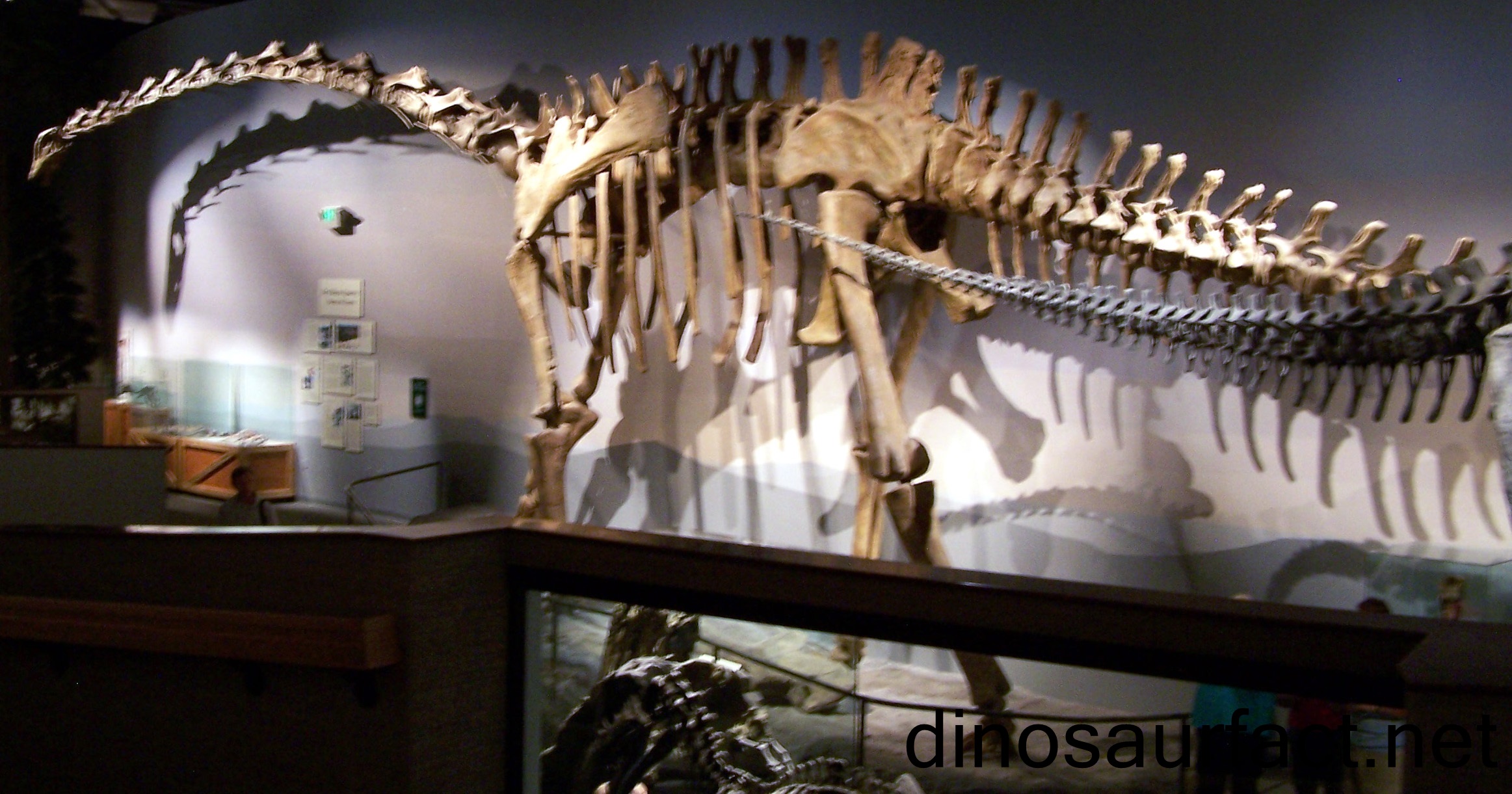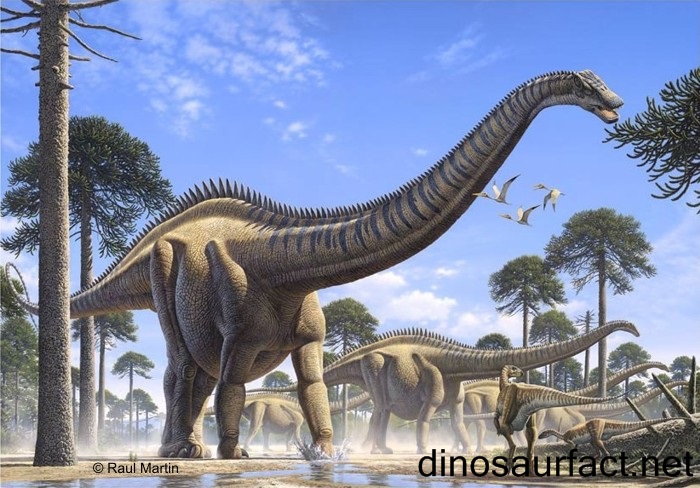 Click to visit the previous dinosaur bio
Click to visit the previous dinosaur bio
 |
|
 |
|
Kingdom: Animalia
Phylum: Chordata
Superorder: Dinosauria
Suborder: Sauropodomorpha
Family: Diplodocidae
Genus: Supersaurus
 |
|
 |
|
 |
|

Supersaurus has been regarded as a sauropod believed to be existing during the late Jurassic period. Supersaurus was characterized by a typical long neck and a long tail and was having a bulky body. Strangely it had a small head and naturally a small brain too. The characteristic that differentiated the Supersaurus from its massive cousins like Diplodocus and Argentinosaurus is the length of the entire body.
Fossil studies revealed that an adult Supersaurus could have easily measured anything around a massive one hundred and ten feet approximately. This length is almost equivalent to a soccer field.
- However interestingly enough Supersaurus was not the heaviest of all the dinosaurs in any proportions. It weighed anything around fifty tones. This was nothing compared to dinosaurs like Bruhathkayosaurus and Futalognkosaurus. These giants easily breached the one hundred tones barrier.
Previously Barosaurus was thought to be a close relative of Supersaurus however with later discoveries, which included the finding of Apatosaurus, this dinosaur looked likely to be a kin of the Supersaurus. Interestingly, Supersaurus isn't the only fancy name given to dinosaurs till date. It should be interestingly mentioned that after a recent discovery and after passing through speculations scientists have named another new sainthood as Ultrasaurus.
As far as its habitat is concerned Supersaurus was believed to spend most of its day in search of food. It is quite natural for this gentle giant to have a huge appetite to fuel its body. To increase its speed of feeding the Supersaurus are believed to have swallowed their food as a whole without even chewing it. Detailed anatomical studies of the skull suggest that these dinosaurs possessed rake shaped teeth. These were very handy to snap of leaves and vegetation from the ground. Supersaurus had characteristic elongated cervical vertebrae.
Supersaurus can be easily regarded as the longest dinosaur to have ever walked on the earth. Fossil studies indicate it was only overtaken by Seismosaurus. The first Supersaurus fossils were discovered in the Dry Messaoquarry. This fossil included only a few bones which were the shoulder girdle, the ischiumand a few neck vertebrae.
The shoulder girdle stood around eight feet tall if it was anatomically placed at the end. However later a better condition fossil was discovered at Converse country situated at Wyoming in the year 1996.This specimen was nicknamed Jumbo and was described in the year 2007. This specimen is being currently kept at the Wyoming Dinosaur Center and is still being prepared for better and in depth diagnostic studies. Experts are currently comparing the two specimens and are trying to establish the tail vertebrae which are currently being named as that of Supersaurus. However it is quite possible that after their study the fossil could well be belonging to some other dinosaur form.
The original Supersaurus specimen was described by noted paleontologist James A. Jensen. Jensen simultaneously discovered another vertebral column. He named this as Ultrasaurus though it was unofficial. Later however it was found out using modern diagnostic equipment that Ultrasaurus was actually a mix of Supersaurus and Brachiosaurus bones. Hence there are some schools of thought that probably believe that Ultrasaurus is just another synonym of Supersaurus.
Anatomical studies reveal that the front legs of the Supersaurus were shorter than the back legs. All the legs were somewhat elephant like and had five toes. One toe on each foot had a thumb like claw. These claws were believed to have a defensive purpose. The tail vertebrae provided that the tail were somehow a whip like appearance. They could have probably used this tail for defensive purpose as well.
Supersaurus were believed to have travelled in herds. They must definitely have migrated when their food source got depleted. Like other sauropods, Supersaurus also laid eggs. Fossil studies indicate Sauropod eggs must have been laid in linear pattern and not on nests. It is presumed on the basis of fossil findings that these eggs were laid while walking. Hence paleontologists have also inferred that Supersaurus did not take care of their newborn. Fossil studies also indicate that the average life span of Supersaurus could have been around one hundred years.
Fossil studies indicate that the neck of the Supersaurus was held more or less parallel to the ground in a horizontal manner. There have been different schools of thought regarding the usage of the long neck by these large sauropods. While some experts believe these long neck were used to get the foliage which was rather unavailable to other heavyweight sauropods who had problems in moving from one place to another. Again there has been another school of thought who believed that using this long neck Supersaurus could have fed on the soft pteridophytes. These Pteridophytes were believed to be found on the wetlands where these huge creatures could not have ventured. They fed on these plants while standing on firm grounds. This adaptation hence gave the Supersaurus an advantage over the other sauropods.
Based on studies and comparison on their leg length, fossil tracks and the body mass, experts have concluded that the Supersaurus were quite slow movers. The intelligence of the Supersaurus are believed to be among the lowest in its Dinosaur clan. Fossil studies of the skull indicate the presence of a second brain. However later it was found out that it was not a second brain but rather an enlargement of the spinal cord in the hip region.
Supersaurus was actually named by James Alvin Jensen. He was a distinguished paleontologist of American origin. His entire research career which was around twenty three years old has been extensively collected at the Birmingham Young University. This University is situated in the Utah region of Colorado. Scientists often compare the significance of his work with that of eminent paleontologist Mr. Barnum Brown who was well known for his contribution in this field in the early twentieth century.
- One of his most important contributions to the field of paleontology remains the replacement of odd looking metal straps and posts which were previously used to make standing dinosaur fossils. James had innovated a support system which were placed inside the bones and provided the framework a support strong enough to make the fossil stand in a particular gait. He should be thanked for this unique innovation that fossils all over the world are using this technology and this highly increases the aesthetic appeal of the fossils to the common man.
Index
Extinct Profiles
 Triassic Dinosaurs
Triassic Dinosaurs Jurassic Dinosaurs
Jurassic Dinosaurs Cretaceous Dinosaurs
Cretaceous Dinosaurs Pterosaurs
Pterosaurs Marine Reptiles
Marine Reptiles Dinosaur Extinction
Dinosaur Extinction